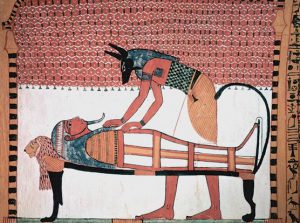Poliomyelitis is a “highly contagious viral infection that can lead to paralysis, respiratory problems, and even death caused by the poliovirus.”1 The virus is highly contagious and specific to humans. The first outbreak of polio in the United States occurred in 1894 with more than 132 reported cases. The number of infected people throughout the United States increased rapidly after the first epidemic with thousands being affected every year after the first onset.2 Thousands of people in the United States were affected by the virus before Dr. Jonas Salk found the vaccine for Poliomyelitis.
Dr. Jonas Salk was born on October 28, 1914, just as World War I was beginning, and four years before the great influenza pandemic of 1918-1919. In 1916 influenza and polio began killing children and the elderly in large numbers.3 Salk’s brilliance could be seen at a young age. When he began school at the age of five, he was very eager to learn, and was able to skip ahead a few grades. Salk described his early years as “the life of an only child, having full attention of a doting, controlling mother who wanted to be sure that her child is protected and will grow up to be a worthwhile person.”4 Salk’s mother could not have done a better job. Dr. Jonas Salk began conducting research on viruses in the 1930s as a student at New York University. After graduating from New York University, Salk attended the University of Michigan. At the University of Michigan, Dr. Salk began working on a flu vaccine, for which he is now known as one of the key contributors to the development of the flu vaccine during World War II. By the 1950s, he was awarded a grant to “study the polio virus and develop a possible vaccine.”5 Dr. Salk had devised a version of the polio vaccine immediately after obtaining the grant. He began clinical trials in which he “was to kill several strains of the virus and then inject the benign viruses into a healthy person’s bloodstream.” 6 This was attempted at first by various other scientists before it was perfected by Dr. Salk. This was successful because the person’s immune system in which it was injected would soon begin to form antibodies towards the virus, which would help in resistance with future exposure to polio.
Before the vaccine was developed and made widely available to the public, many researchers developed alternative ways to help control the symptoms of polio. Sister Kenny, an Australian nurse, came to the United States to promote a treatment she had developed specifically for polio. This treatment consisted of the use of warm compresses to relax contracting muscles. Another invention was that of the “iron lung,” which was developed to aid in respiration. Some of the main symptoms of polio are swallowing and respiratory difficulties, so the “iron lung” was developed to help alleviate some of the respiratory problems people with polio were experiencing.7

On March 26, 1953, Dr. Salk was able to announce his findings on the polio vaccine. The news was quickly published in articles and newspapers and announced on the radio. In 1954, clinical trials began testing on approximately two million American schoolchildren. It was not until April of 1955 that it was announced that the vaccine was indeed effective and could be manufactured. It took about two years for the vaccine to become widely available throughout the United States. Within the first year that the polio vaccine became available the number of cases per year decreased dramatically. Polio, along with many other viral diseases, has no cure. The vaccine that was manufactured was intended to prevent others from contracting the virus. With polio, prevention is the key. Albert Sabin, a Polish-American researcher, was able to facilitate the distribution of the vaccine by developing an oral vaccine.8
For the current year 2016, only about seventy cases of poliomyelitis have been reported, and only two countries remain polio-endemic.9 About 90-95% of the reported cases are asymptomatic, meaning no symptoms are present. This has been made possible because of Dr. Salk and all of the researchers that put their time and effort into discovering the vaccine to prevent poliomyelitis.
- Bernard Seytre and Mary M. Shaffer, “Coming Along at the Right Time: Jonas Salk,” in The Death of a Disease : A History of the Eradication of Poliomyelitis (New Brunswick: Rutgers University Press, 2005), 44. ↵
- Scott S. Smith, “Jonas Salk Stood Tall With His Polio Vaccine Rescue: The Chemist Came through in Paralysis Battle,” Investor’s Business Daily, July 17, 2015. ↵
- Scott S Smith, “Jonas Salk Stood Tall With His Polio Vaccine Rescue: The Chemist Came through in Paralysis Battle,” Investor’s Business Daily, July 17, 2015. ↵
- Charlotte DeCroes Jacobs, Jonas Salk: A Life, 1st edition (Oxford ; New York: Oxford University Press, 2015), 36. ↵
- Scott S. Smith, “Jonas Salk Stood Tall With His Polio Vaccine Rescue: The Chemist Came through in Paralysis Battle,” Investor’s Business Daily, July 17, 2015. ↵
- Salem Press Biographical Encyclopedia, 2015, s.v. “Jonas Salk,” by Elof Axel Carlson. ↵
- Charlotte DeCroes Jacobs, Jonas Salk: A Life, 1st edition (Oxford ; New York: Oxford University Press, 2015), 45. ↵
- Salem Press Biographical Encyclopedia, 2015, s.v. “Jonas Salk,” by Elof Axel Carlson. ↵
- Seytre and Shaffer, “Coming Along at the Right Time: Jonas Salk,” in The Death of a Disease : A History of the Eradication of Poliomyelitis, 44. ↵



65 comments
Jeremiah Durand
I found this article very informative. The data and information displayed, provides a solid surface level of background on Jonas Salk as well as the events of the world around Jonas Salk’s polio vaccine discovery. I do really like how you mentioned influenza and world war 1 because the reality of this time frame as that there were many epidemics going on at once which some can say constituted to such a late discovery of the polio vaccine. Had these events not taken place I truly feel it would be a different physician scientist you would be writing about today as the vaccine would be made a lot sooner. I appreciate this brief synopsis.
Abigale Carney
After reading this informative article, it reminded me of a novel I read called, Small Steps written by Peg Kehret, which was about a young woman being diagnosed with Polio, and then overcoming the disease. I never knew the real issues of Polio until after reading this article. Dr. Salk saved many lives and prevented many cases by creating the Polio vaccine. It is extremely frightening to know of Polio outbreaks without a vaccination to cure and prevent the disease, so I am very grateful Dr. Salk was able to find a way to control this disease.
Angely Noriega Baron
Polio is a very crippling and deadly infectious disease. I find Dr. Salk’s work so fascinating because of his findings on the polio vaccine, he prevented so many others from contracting the virus. It is pretty upsetting to know that there are thousands of people who don’t vaccinate their kids because they can help prevent these types of diseases from spreading.
Sharriah Martinez
I am very grateful for the work of Dr. Jonas Salk. I had no idea who created/ developed the polio vaccine. I feel that his name should be more well know. His creation has stopped many outbreaks. I am pro vaccine, i believe that everyone should be vaccinated, it would make this world a healthier place to live. Alot of diseases, sicknesses can be prevented. Although there is no cure yes it can be prevented.
Rebeca Escobar
Dr. Salk’s work is so important and essential. His work has saved the lives of many and prevented outbreaks. It saddens me that not everyone sees his work as crucial and relevant, most especially around this time in 2019 because now there’s people who refuse to vaccinate their kids! So many people don’t understand how important vaccines are, especially for something like polio.
Diego Terrazas
Dr. Salk was an important contribution to assisting in treating this virus. I found it interesting reading about other alternatives or attempts at treating polio. It makes me wonder what would happen to the human race if no vaccine or form of prevention is invented. We must be thoroughly grateful to the medical field. I wonder we would be able counter epidemics more efficiently with our advancements in the medical field.
Christopher Hohman
Nice article. Dr. Salk’s work was quite important. Without him it may have taken longer to develop a vaccine and more young children may have been infected. I had also heard that there was something of a competition between Dr. Salk and Sabin over who’s vaccine was more effective. And in the end Salk’s vaccine proved to be more effective. This article also has some relevance in 2019 because there is a mini polio outbreak in the U.S today because people will not take vaccines.
Bictor Martinez
This was a very informative article about polio and Dr. Salk. I did not know who was able to find the cure for polio until I read this article. Reading about Dr. Salk about his early youth, you can tell he was gonna do great things in his life. It was also amazing to read that he was eager to learn not like many others. This helped be one step ahead than everybody else. Thanks to Dr. Salk he was able to save millions of people and who know what could have happened if it were not for him.
Mia Stahl
I remember as a child studying my mothers arm and asking her what the scar on her upper right arm was, it was her polio vaccination scar. She explained to me that polio was a disease that killed many people before someone for a preventative vaccine for it, little did I know that was Dr.Salk. Reading this article gave light to many of my childhood curiosities about the virus and who was responsible for saving so many lives.
Marina Castro
Very informative article! People tend to forget that events like the discovery of the cure for polio are so important in history. Men like Dr. Jonas Salk are so underrated and are definitely not given the credit they deserve. Because of them, countless lives were saved. This disease was so fatal and killed hundreds of unfortunate people. Great job, this article was really good!